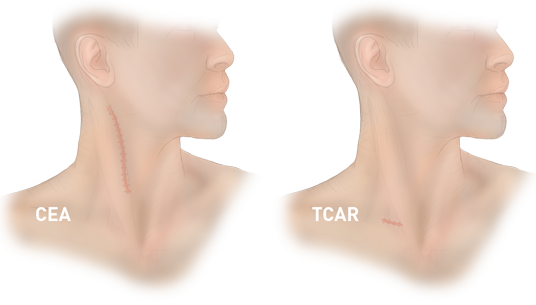New minimally-invasive treatment option for carotid artery disease
Stroke is the number five cause of death and a leading cause of disability in the United States. Carotid artery disease is a leading cause of ischemic stroke. Advanced carotid atherosclerosis represents a risk of stroke from low flow and/or plaque rupture that can be reduced or prevented by carotid intervention in combination with medical treatment
Community Heart and Vascular Hospital has a new innovative treatment for patients at risk for stroke from carotid artery disease. This minimally invasive procedure, called TransCarotid Artery Revascularization or TCAR, utilizes a new FDA-approved ENROUTE® Transcarotid Neuroprotection System (NPS) to decrease the risk of stroke associated with carotid intervention. During the procedure, flow is temporarily reversed in the carotid artery and dangerous pieces of plaque and blood clots are safely diverted away from the brain minimizing the risk of stroke.
The standard treatment option for advanced carotid artery disease is carotid endarterectomy (CEA), an open surgical procedure. This surgical technique is quite durable with a low stroke rate, but does involve a large incision on the neck (see illustration) and an associated risk of cranial nerve injury that can result in difficulty with swallowing, speaking and sensation in the face.
Transfemoral carotid stenting is another option for the treatment of symptomatic carotid artery disease, but is associated with a high risk of stroke compared to carotid endarterectomy.

TCAR is a combination of open surgery and carotid stenting that provides many benefits to patients including a quicker recovery, less pain and reduced risk of complications.
For questions about TCAR, please call 317-355-7220.
TCAR Specialists
Community Heart and Vascular offers several vascular surgeons specially trained in TCAR:

